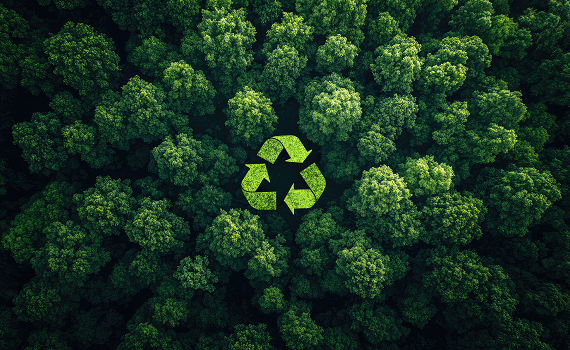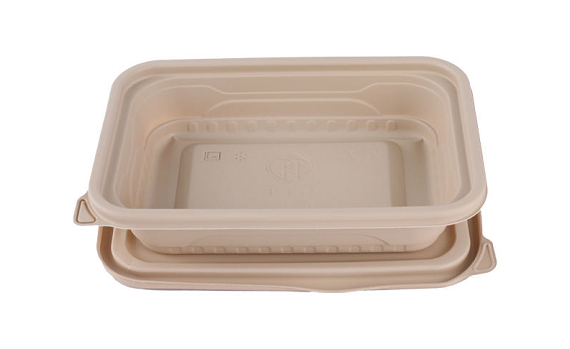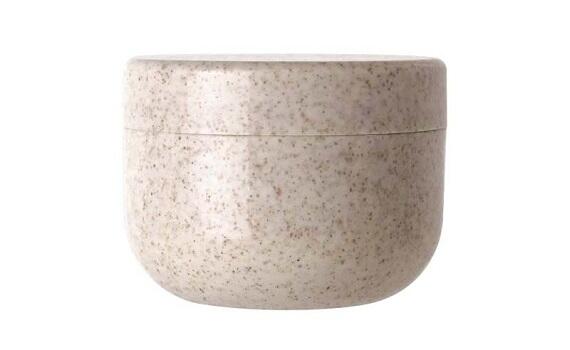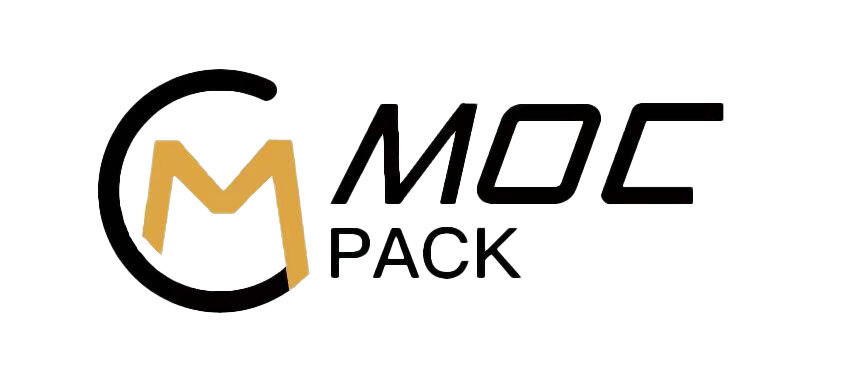What is biodegradable packaging? Comprehensive analysis of new trends in environmentally friendly packaging materials
>In the current booming cosmetics industry, packaging, as an indispensable part of products, is facing severe environmental challenges. According to relevant data, plastic accounts for over 60% of the cosmetic packaging waste generated globally each year, with the majority being difficult to naturally degrade. This not only pollutes soil and water sources, but also poses a serious threat to marine ecosystems. In this context, biodegradable packaging has gradually entered the public eye and become an important direction for the sustainable development of the cosmetics packaging industry.
Why do we need biodegradable packaging
The world generates a large amount of plastic waste every year, which is expected to reach 26 billion tons by 2050. Traditional plastic packaging takes hundreds of years to decompose, leading to serious' white pollution '.
The cosmetics industry extensively uses plastic packaging, from bottles and cans to outer packaging boxes, which are often quickly discarded after use and become an important source of environmental pollution.
Biodegradable packaging provides a sustainable solution that can significantly reduce the negative impact of the cosmetics industry on the environment, while meeting the needs of an increasing number of environmentally conscious consumers.

The true meaning of biodegradability
Biodegradable packaging not only requires materials to be biodegradable, but also meets a series of standards. According to international standards such as EN13432 (EU), ASTM D6400 (USA), and GB/T 38082 (China), biodegradable packaging needs to be completely decomposed into CO ₂ and water within 180 days under industrial composting conditions, with no residual microplastics.
The biodegradation rate is a key indicator, and the new version of the Chinese standard GB/T 33798-2025 requires that the relative biodegradation rate of the product should be ≥ 90%, and the organic content should be ≥ 51%. This means that not all materials labeled as "biodegradable" meet environmental requirements and require review of relevant certifications.
The Importance of Biodegradable Packaging
The use of biodegradable packaging directly contributes to environmental protection. Data shows that biodegradable plastic shopping bags can reduce carbon emissions by 70% compared to traditional PE bags.
In China, the national standard for biodegradable plastic shopping bags has been implemented for over five years, resulting in an annual reduction of approximately 20 billion traditional plastic bags and a significant decrease in the proportion of traditional plastics in urban household waste.
For cosmetics companies, adopting biodegradable packaging is not only a manifestation of corporate social responsibility, but also meets consumers' expectations for environmentally friendly products, enhances brand image and market competitiveness.
Types of Biodegradable Packaging Materials
·Cardboard and Paper
These are popular biodegradable packaging materials made from wood fibers. The materials are renewable, recyclable, and biodegradable, and they can be used for various packaging applications, such as boxes, bags, and envelopes. It is commonly used for food packaging, much better than the conventional plastic packaging we want to phase out.

·Cornstarch Packaging
Cornstarch packaging is a biodegradable and compostable alternative to plastic packaging. It is made from cornstarch and other natural materials, and it can break into organic matter in months. Cornstarch packaging, such as takeout containers and utensils, is commonly used for food packaging.
·Biodegradable Packing Peanuts
They are a sustainable alternative to traditional Styrofoam packing peanuts. Biodegradable packing peanuts are commonly used for shipping fragile items. They are made from natural materials, such as cornstarch, and can be composted or dissolved in water.
·Water-Soluble Plastic
Water-soluble plastic is a biodegradable plastic alternative that can break down into non-toxic components in water. It is commonly used for single-use items like bags and packaging films. These are among the best recycled materials on the market.
·Organic Fabric and Bamboo
Organic fabric and bamboo are renewable and biodegradable materials that can be used for various packaging applications, such as bags and wraps. These organic materials are compostable and can break down naturally over time.
·Acid-Free Tissue Paper and Kraft Paper
Acid-free tissue paper and kraft paper are biodegradable and recyclable materials used for packaging and wrapping. These materials are commonly used in the fashion and gift industries. This popular plastic alternative is much better than using raw materials from fossil fuels. Also, they form a big part of home or industrial compost.
·Mushroom Packaging
Mushroom packaging is a biodegradable and compostable alternative to polystyrene foam packaging. It is made from agricultural waste and mushroom mycelium, which forms a natural glue that can bind the waste together. A closely linked alternative to mushroom packaging is the seaweed packaging, which has similar benefits.
Mushroom packaging is popularly used for packaging fragile items, such as electronics.
·Corrugated Bubble Wrap
Corrugated bubble wrap is a biodegradable and recyclable alternative to traditional plastic bubble wrap. It is made from recycled cardboard and paper
·Bio-plastics
Bio-plastics are biodegradable and compostable plastics from renewable resources such as cornstarch or sugarcane. They are commonly used for food packaging, cutlery, and other single-use items, and are eco friendly compared to non biodegradable plastics.

Application Fields and Case Analysis
Biodegradable packaging has a wide range of applications in multiple fields:
In the field of cosmetic packaging, biodegradable materials can be used to make product packaging such as tubular containers, bottles, powder boxes, as well as outer packaging boxes and filling materials.
Food packaging is the earliest application field of biodegradable materials, such as salad cups, meal boxes, etc. Research has shown that carrageenan zinc oxide nanocomposite coating can extend the shelf life of mangoes by 14 days.
Retail and logistics packaging such as shopping bags, courier bags, etc. Biodegradable bags can be customized with a thickness of 15-100 μ m and a load-bearing capacity of 3-15kg.
Disposable items such as hotel toiletries packaging and sample packaging are commonly used packaging forms in the cosmetics industry.
Advantages and challenges coexist
Biodegradable packaging has multiple advantages: environmental protection is its biggest advantage, as it can reduce carbon footprint and contribute to climate action; In terms of brand enhancement, using eco-friendly packaging can enhance brand image and attract environmentally conscious consumers; In terms of policy compliance, it complies with global regulations on restrictions on the use of disposable plastics; In terms of functional performance, modern biodegradable materials have good mechanical strength and barrier properties.
But it also faces some challenges: cost issue, PLA raw material cost is twice that of traditional LDPE; Due to technological limitations, the waterproofing and mechanical strength of certain biodegradable materials still need to be improved; Certification is complex and requires obtaining multiple international certifications to ensure genuine environmental protection; Consumer awareness, many people still do not understand how to properly handle biodegradable packaging.

Future Development Trends
Biodegradable packaging technology is constantly innovating and developing. Nanocomposite materials enhance the antibacterial quality and mechanical properties of packaging materials by combining nanomaterials with polymers. The multi-layer composite structure combines the advantages of different materials, such as the paper-based polylactic acid material developed by Belarusian scientists, which not only maintains the recyclability of paper, but also provides waterproofing through PLA coating. The Extended Producer Responsibility (EPR) policy framework is also promoting the development of biodegradable packaging, with the EU increasing plastic recycling rates through EPR policies, further integrating technological innovation and policy incentives.
As a company specializing in cosmetics and personal care packaging, we are well aware of the importance of biodegradable packaging in the development of the industry. We are always committed to providing customers with high-quality and environmentally friendly biodegradable cosmetic packaging products, continuously increasing investment in the research and production of biodegradable materials, optimizing product structure, and meeting the needs of different customers. We believe that with the continuous maturity of biodegradable packaging technology and the expanding market demand, it will play a more important role in the cosmetics and personal care packaging industry, contributing to the sustainable development of the industry. We also look forward to working together with more cosmetics companies to promote the widespread application of biodegradable packaging and make positive contributions to protecting our planet.
Choosing biodegradable packaging is not only about choosing a material, but also about choosing an attitude that is responsible for the future of the enterprise and the earth's environment.


